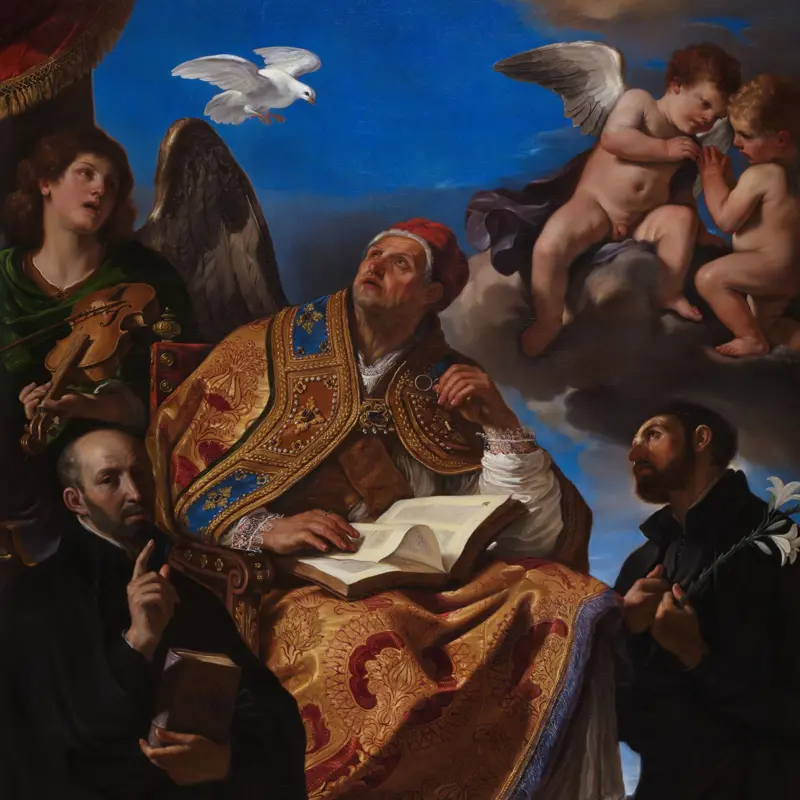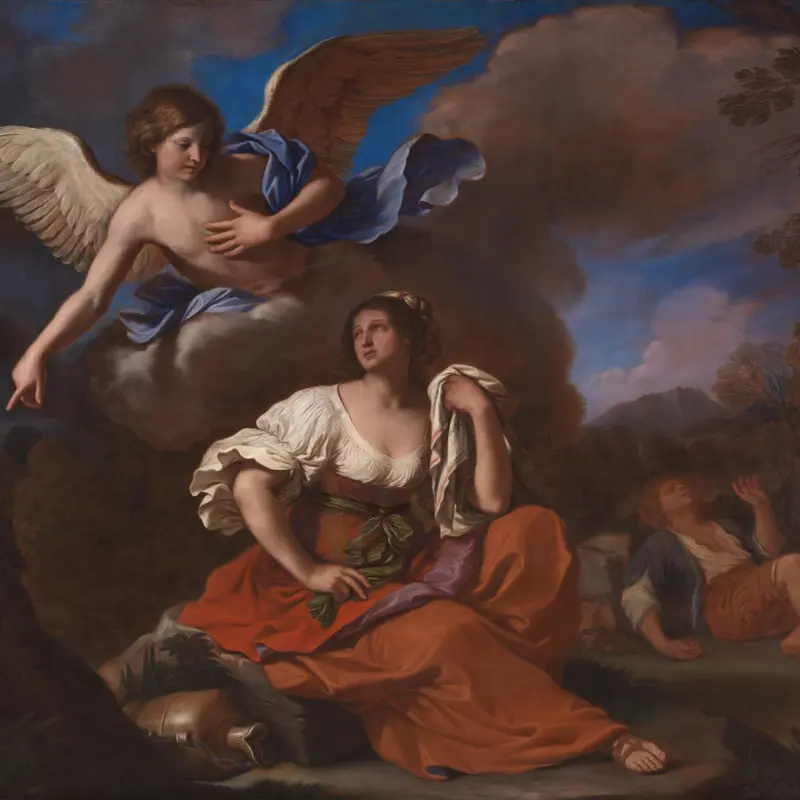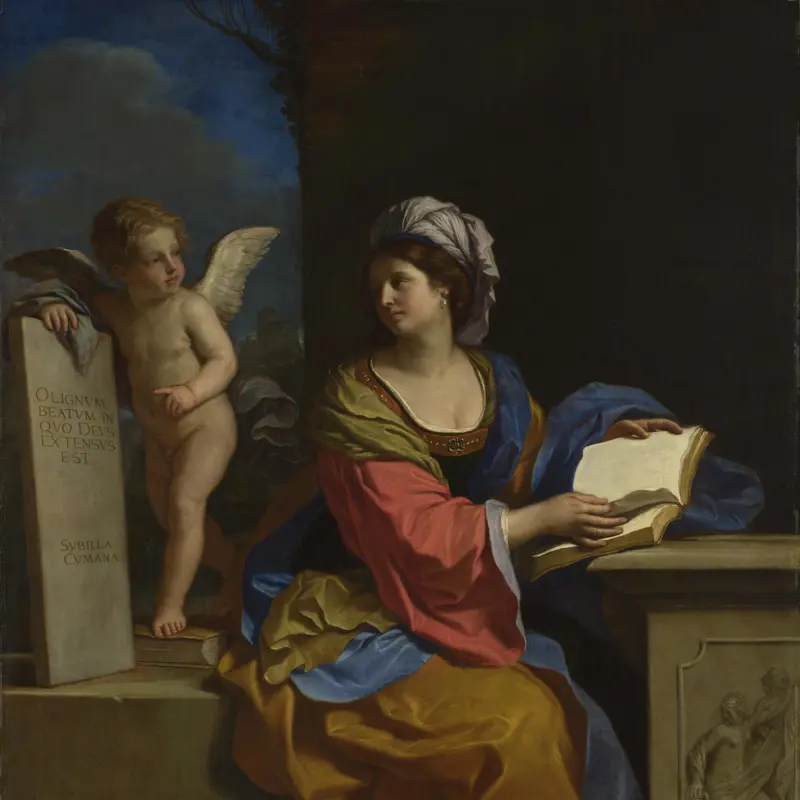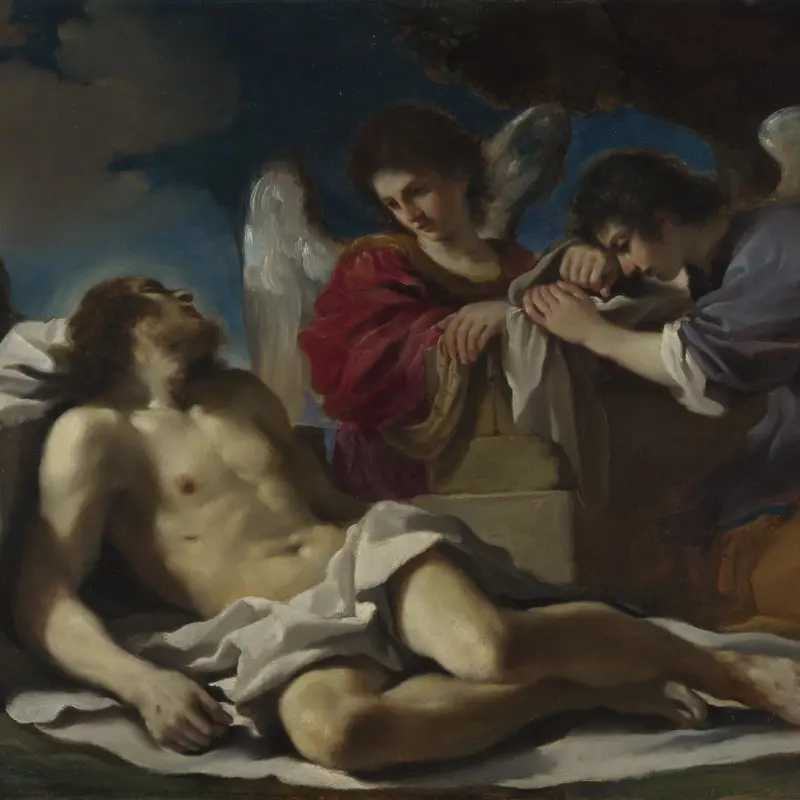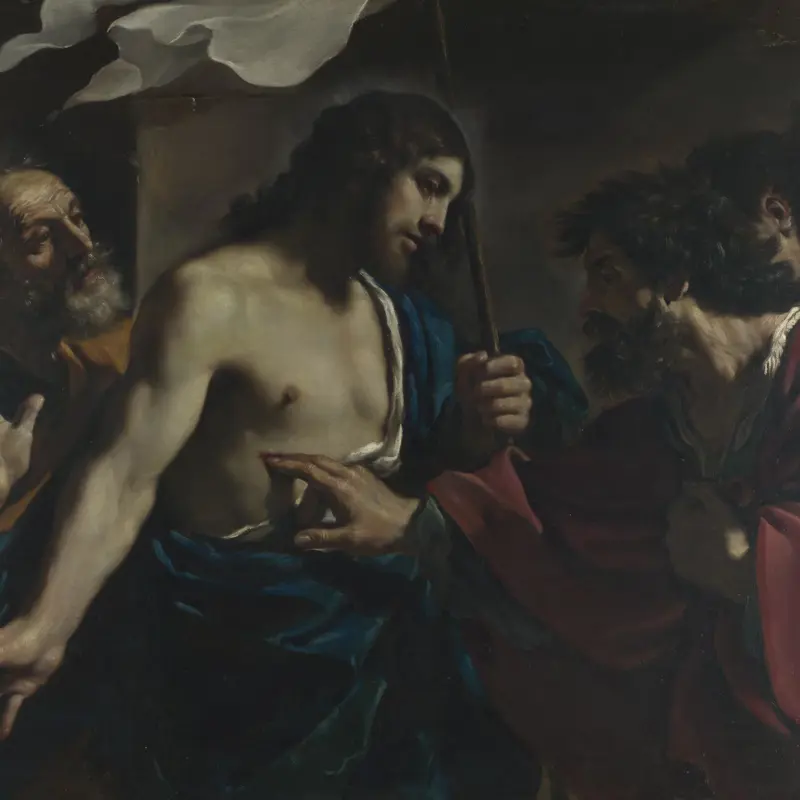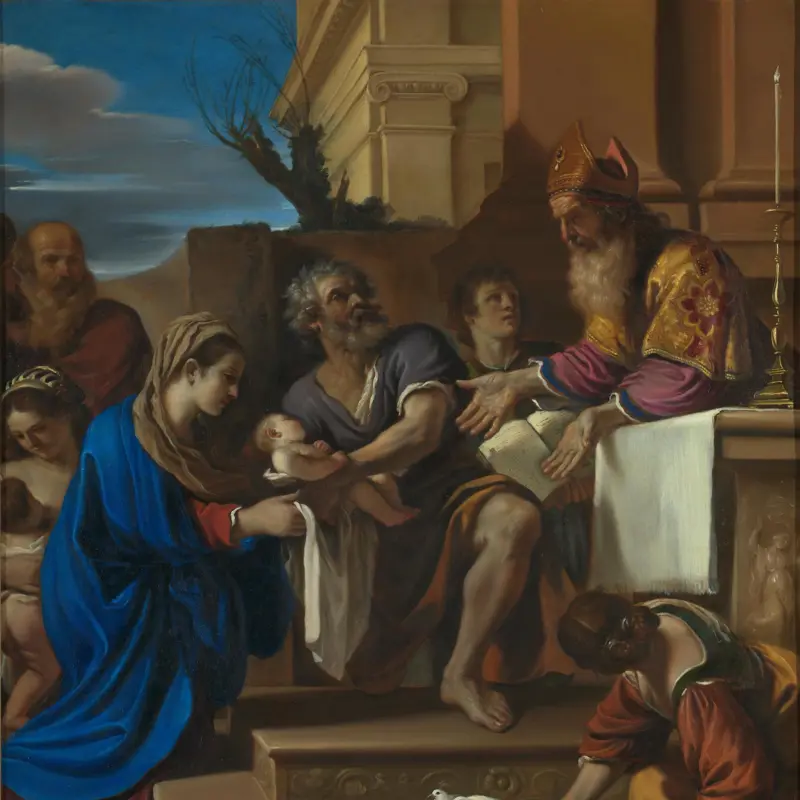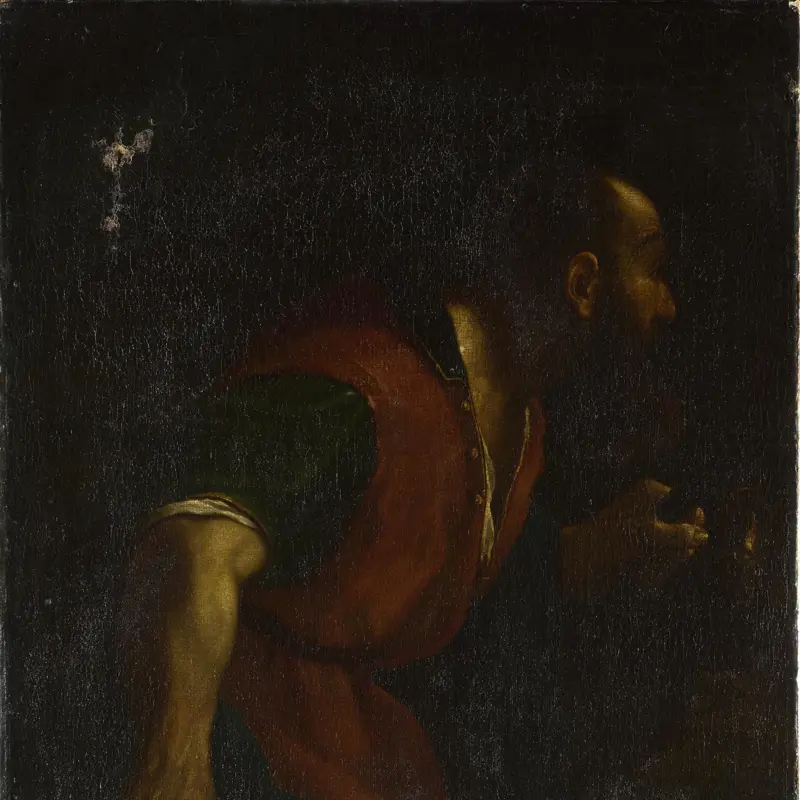Guercino, 'The Samian Sibyl with a Putto', 1651
About the work
Overview
The Samian Sibyl was one of 12 pagan sibyls (or priestesses) who, like the Old Testament prophets, were said to have foretold the coming of Christ. The Samian Sibyl, named after the Greek island of Samos, was an oracle of Apollo and prophesied that Christ would be born to a virgin mother, as the inscription on her scroll indicates.
Sibyls were popular in Italian art and were commonly shown with books or scrolls, alluding to the Sybilline Books in which their prophecies were recorded. Here the Samian Sibyl rests her elbow on one book while reading from another, and a large tome sits on the table in front of her, open at a page with elegant script. This painting was made in 1651 for Gioseffo Locatelli of Cesena. Guercino also made The Cumaean Sibyl with a Putto for Locatelli (also in the National Gallery collection) but was convinced by Prince Mattias de' Medici to sell it to him instead, so The Samian Sibyl was produced as its replacement.
Key facts
Details
- Full title
- The Samian Sibyl with a Putto
- Artist
- Guercino
- Artist dates
- 1591 - 1666
- Date made
- 1651
- Medium and support
- Oil on canvas
- Dimensions
- 218.5 × 180 cm
- Acquisition credit
- Accepted by HM Government in lieu of Inheritance Tax and allocated to the National Gallery, 2012
- Inventory number
- NG6618
- Location
- Room 32
- Collection
- Main Collection
- Frame
- 18th-century English Frame
Provenance
Additional information
Text extracted from the National Gallery’s Annual Report, ‘The National Gallery: Review of the Year, April 2012 – March 2013’.
Exhibition history
-
2014Long Loan to Spencer House (2014 - 2015)Spencer House17 October 2014 - 16 October 2015
-
2024Guercino at WaddesdonWaddesdon Manor (Rothschild Foundation)20 March 2024 - 20 October 2024
Bibliography
-
2014National Gallery, The National Gallery: Review of the Year, April 2012 - March 2013, London 2014
About this record
If you know more about this work or have spotted an error, please contact us. Please note that exhibition histories are listed from 2009 onwards. Bibliographies may not be complete; more comprehensive information is available in the National Gallery Library.



